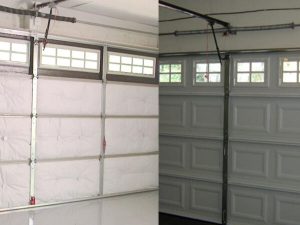How to Tell if a Door is Insulated: A Comprehensive Guide
Introduction
Proper insulation is essential for energy efficiency and maintaining a cosy indoor climate. Insulated doors can help keep a room warmer or cooler, improve soundproofing, and result in cheaper energy costs. How can you know if a door is insulated, though? This post will give you a detailed guide to help you determine whether a door is insulated or not. How do you tell if a door is insulated?

Understanding the Importance of Insulated Doors
In order to keep your home or building at a comfortable temperature, insulated doors are essential. Insulation aids in maintaining the ideal temperature consistently and shields the inside environment from the elements, whether it’s summer or winter. Insulated doors can also reduce noise transmission, enhancing the tranquilly and seclusion of your space overall.
Visual Inspection
Visual inspection is the first step in assessing whether a door is insulated. Start by looking at the structure and parts of the door. Seek out any obvious indications of insulation-related components or characteristics. Here are some important signs to take into account:
- Thickness of the Door: those with insulation are typically thicker than those without insulation. Use a tape measure to determine the thickness of the door. It is more likely to be insulated if the door is thicker than the usual 1 3/8 inches (35 mm) for an internal door or 1 3/4 inches (44 mm) for an exterior door.
- Weight: Doors with insulation typically weigh more than doors without insulation. To determine the door’s weight, gently push or lift it. It might have insulation in its core if it feels noticeably heavier than other doors in your house.
- Labels for Insulation: Some manufacturers use labels or stickers to doors to indicate insulation. Observe the edge and frame of the door for any tags, marks, or labels. These labels frequently provide details about the door’s insulation rating and construction components.
- Insulation Material That Can Be Seen: Insulated doors may have foam or other insulation materials that are visible inside of them. Check the door’s edges, corners, and cutouts for any observable indications of insulation.
Door Material
The door’s construction material can reveal information regarding its insulating capabilities. Certain materials are more frequently used for insulation, even though not all doors constructed of a certain material are insulated. Here are some typical door materials and some information about how well they insulate:
- Wood: In comparison to hollow doors, solid wood doors, especially those with a solid core, typically provide higher insulation. Not all wooden doors are, however, insulated, thus other variables should be taken into account in addition to the material.
- Fiberglass: Insulation is frequently considered when manufacturing fibreglass doors. They often have a foam core, which has great insulation qualities. Seek out fibreglass doors with a high R-value because this suggests more effective insulation.
- Steel: For outdoor applications, steel doors are frequently utilised. Although steel is not a particularly effective insulator by itself, some steel doors contain a core that is filled with insulating materials like polyurethane foam. Enquire with the manufacturer about the insulation qualities of the steel doors or look for steel doors with an insulation rating.
- Aluminum: Although aluminium doors are strong and lightweight, they are not well renowned for their insulating qualities. They are frequently employed in commercial or industrial settings, where insulation may not be a major concern.
Professional Assessment
You might think about getting a professional assessment if the visual inspection and material assessment are inconclusive regarding the door’s insulation status. Using specialised equipment and methods, a skilled contractor or energy auditor can assess the door’s insulating capabilities. To find any places where heat transfer or air leakage is occuring, they might employ thermal imaging cameras or run blower door tests.
In order to assess the effectiveness of the insulation, the specialist will carefully inspect the door, including its frame, seals, and surrounding areas. They will give you a precise evaluation of the door’s insulation level and make any necessary suggestions for upgrades or replacements. For commgen refrigerated insulated doors see here.
Conclusion
For your home or building to be energy efficient, comfortable, and noise-free, you must know if a door is insulated. You can reliably determine if a door is insulated or not by visually evaluating the door, taking into consideration its material, and, if necessary, getting professional assessment.

Keep in mind that while visual cues and material traits can be instructive, they do not necessarily prove the existence of insulation. It is advised to consult a professional for a thorough inspection, especially when thinking about replacing or upgrading your insulation.
Long-term gains from investing in insulated doors include decreased energy use, cheaper utility costs, increased indoor comfort, and improved soundproofing. Therefore, take the time to evaluate your doors and make wise choices to create a cosy and energy-efficient living or working area.
You’ll be better prepared to identify whether a door is insulated and make the appropriate decisions for your home or building if you adhere to the instructions provided in this detailed guide. Make sure your doors are appropriately insulated to put comfort and energy efficiency first, helping to create a more sustainable and inviting atmosphere.

Recent Comments